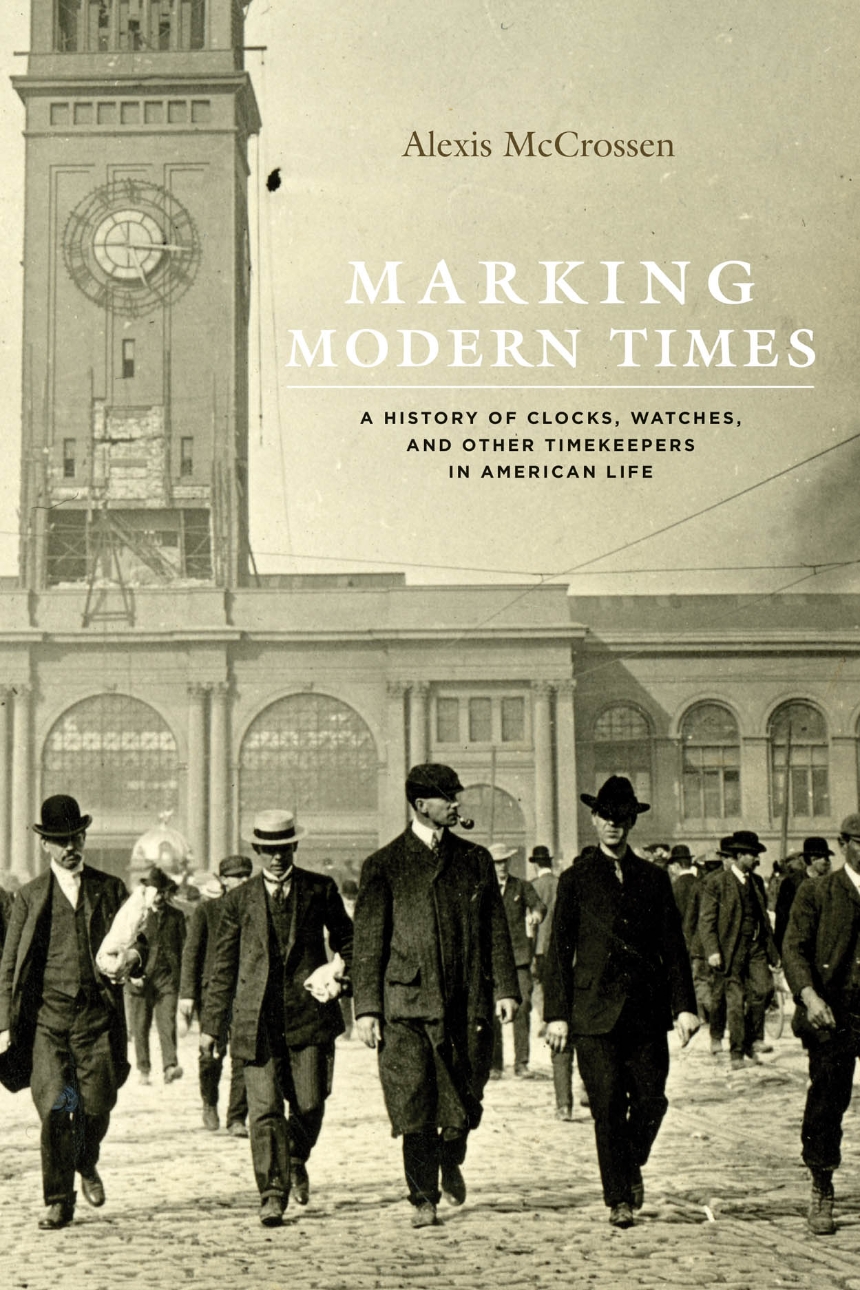Marking Modern Times
A History of Clocks, Watches, and Other Timekeepers in American Life
9780226379685
9780226015057
Marking Modern Times
A History of Clocks, Watches, and Other Timekeepers in American Life
The public spaces and buildings of the United States are home to many thousands of timepieces—bells, time balls, and clock faces—that tower over urban streets, peek out from lobbies, and gleam in store windows. And in the streets and squares beneath them, men, women, and children wear wristwatches of all kinds. Americans have decorated their homes with clocks and included them in their poetry, sermons, stories, and songs. And as political instruments, social tools, and cultural symbols, these personal and public timekeepers have enjoyed a broad currency in art, life, and culture.
In Marking Modern Times, Alexis McCrossen relates how the American preoccupation with time led people from across social classes to acquire watches and clocks. While noting the difficulties in regulating and synchronizing so many timepieces, McCrossen expands our understanding of the development of modern time discipline, delving into the ways we have standardized time and describing how timekeepers have served as political, social, and cultural tools in a society that doesn’t merely value time but regards access to time as a natural-born right, a privilege of being an American.
In Marking Modern Times, Alexis McCrossen relates how the American preoccupation with time led people from across social classes to acquire watches and clocks. While noting the difficulties in regulating and synchronizing so many timepieces, McCrossen expands our understanding of the development of modern time discipline, delving into the ways we have standardized time and describing how timekeepers have served as political, social, and cultural tools in a society that doesn’t merely value time but regards access to time as a natural-born right, a privilege of being an American.
271 pages | 66 halftones, 2 tables | 6 x 9 | © 2013
History: American History, History of Technology, Urban History
Reviews
Table of Contents
List of Illustrations
Acknowledgments
Acknowledgments
Introduction Unveiling the Jewelers’ Clock
One Time’s Tongue and Hands: The First Public Clocks in the United States
Two Clockwatching: The Uneasy Authority of Clocks and Watches in Antebellum America
Three Republican Heirlooms, Instruments of Modern Time Discipline: Pocket Watches during and after the Civil War
Four Noon, November 18, 1883: The Abolition of Local Time, the Debut of a National Standard
Five American Synchronicity: Turn-of-the-Century Tower Clocks, Street Clocks, and Time Balls
Six Monuments and Monstrosities: The Apex of the Public Clock Era
Epilogue Content to Look at My Watch: The End of the Public Clock Era
Two Clockwatching: The Uneasy Authority of Clocks and Watches in Antebellum America
Three Republican Heirlooms, Instruments of Modern Time Discipline: Pocket Watches during and after the Civil War
Four Noon, November 18, 1883: The Abolition of Local Time, the Debut of a National Standard
Five American Synchronicity: Turn-of-the-Century Tower Clocks, Street Clocks, and Time Balls
Six Monuments and Monstrosities: The Apex of the Public Clock Era
Epilogue Content to Look at My Watch: The End of the Public Clock Era
Notes
Index
